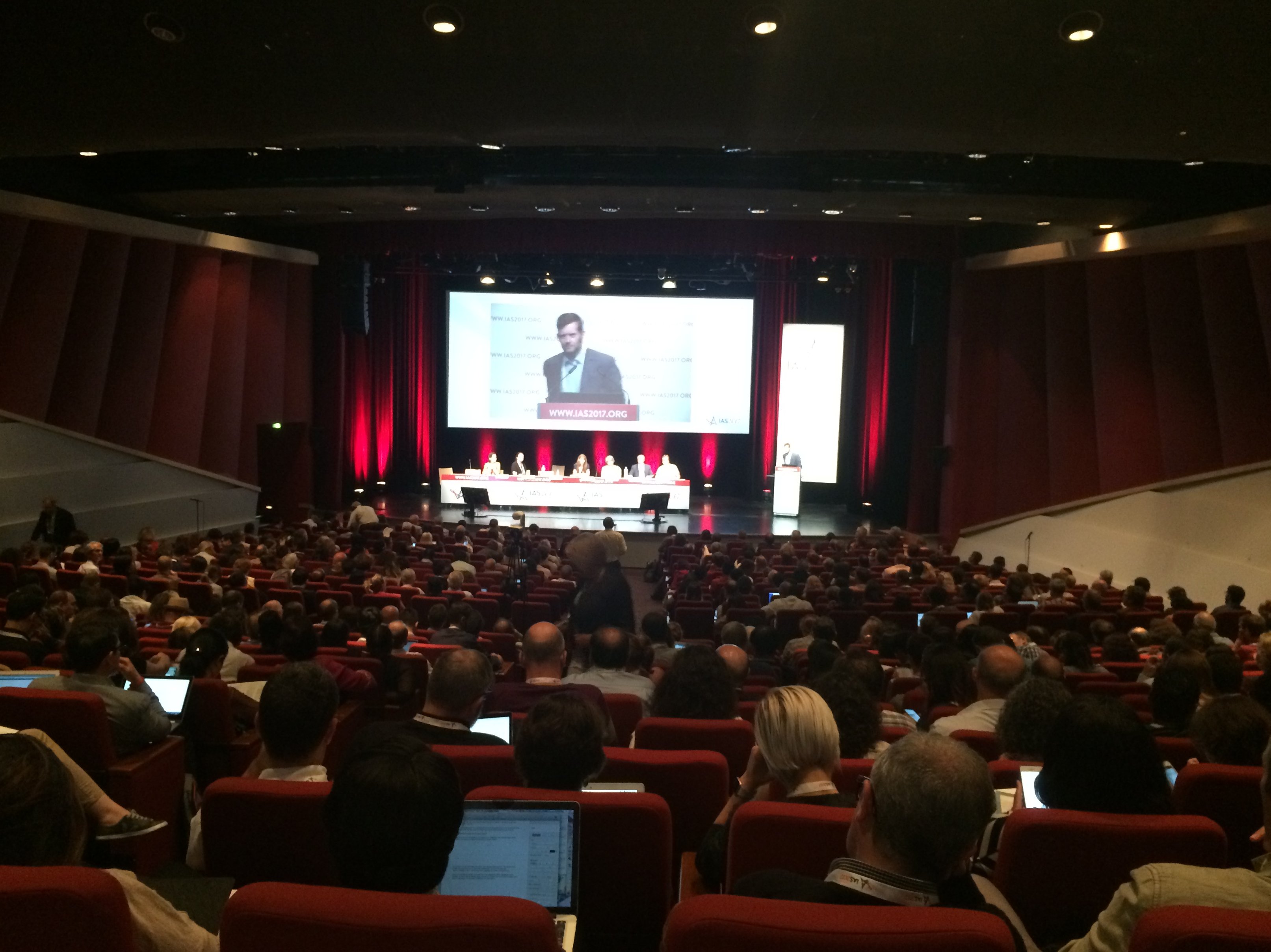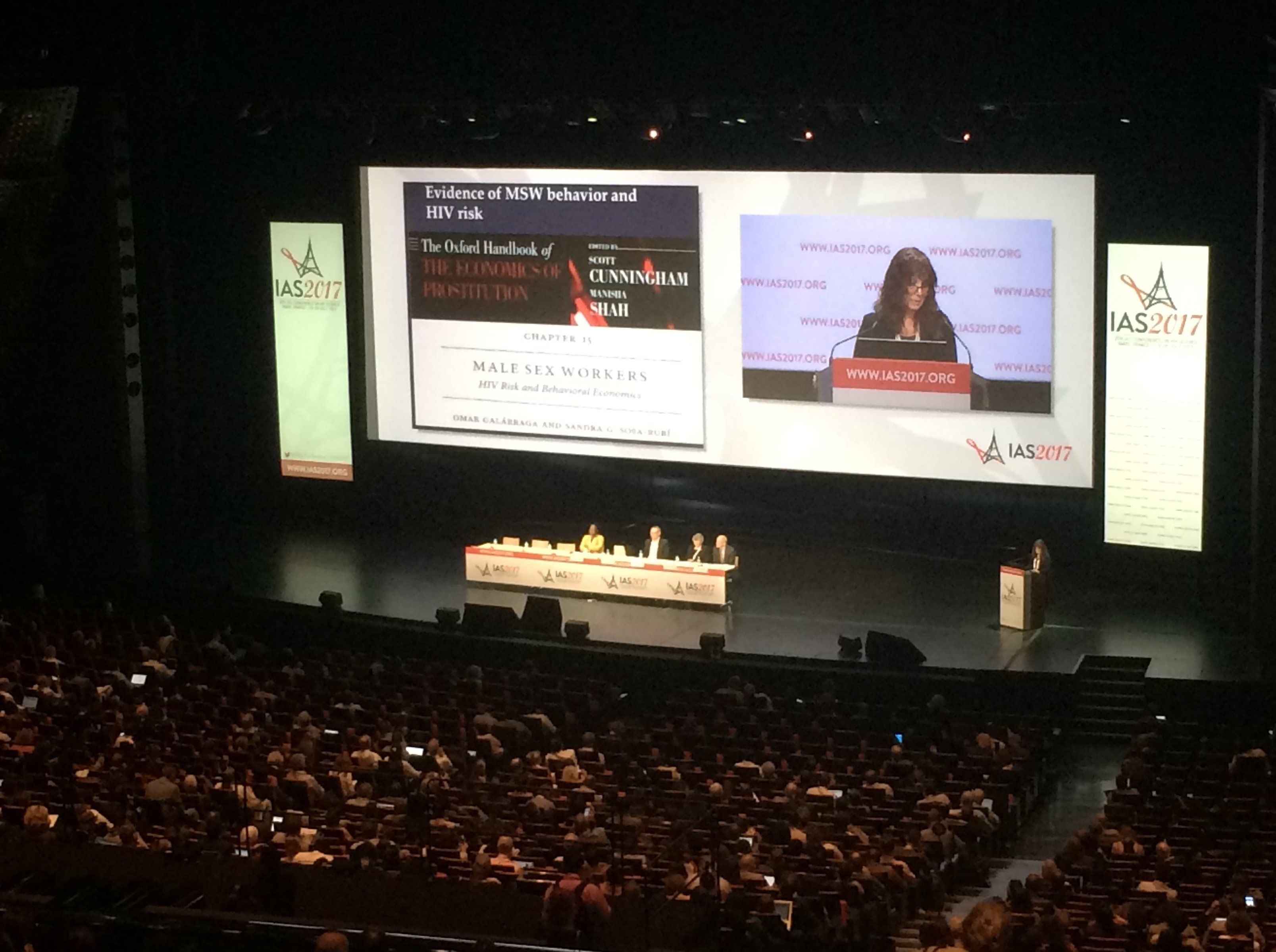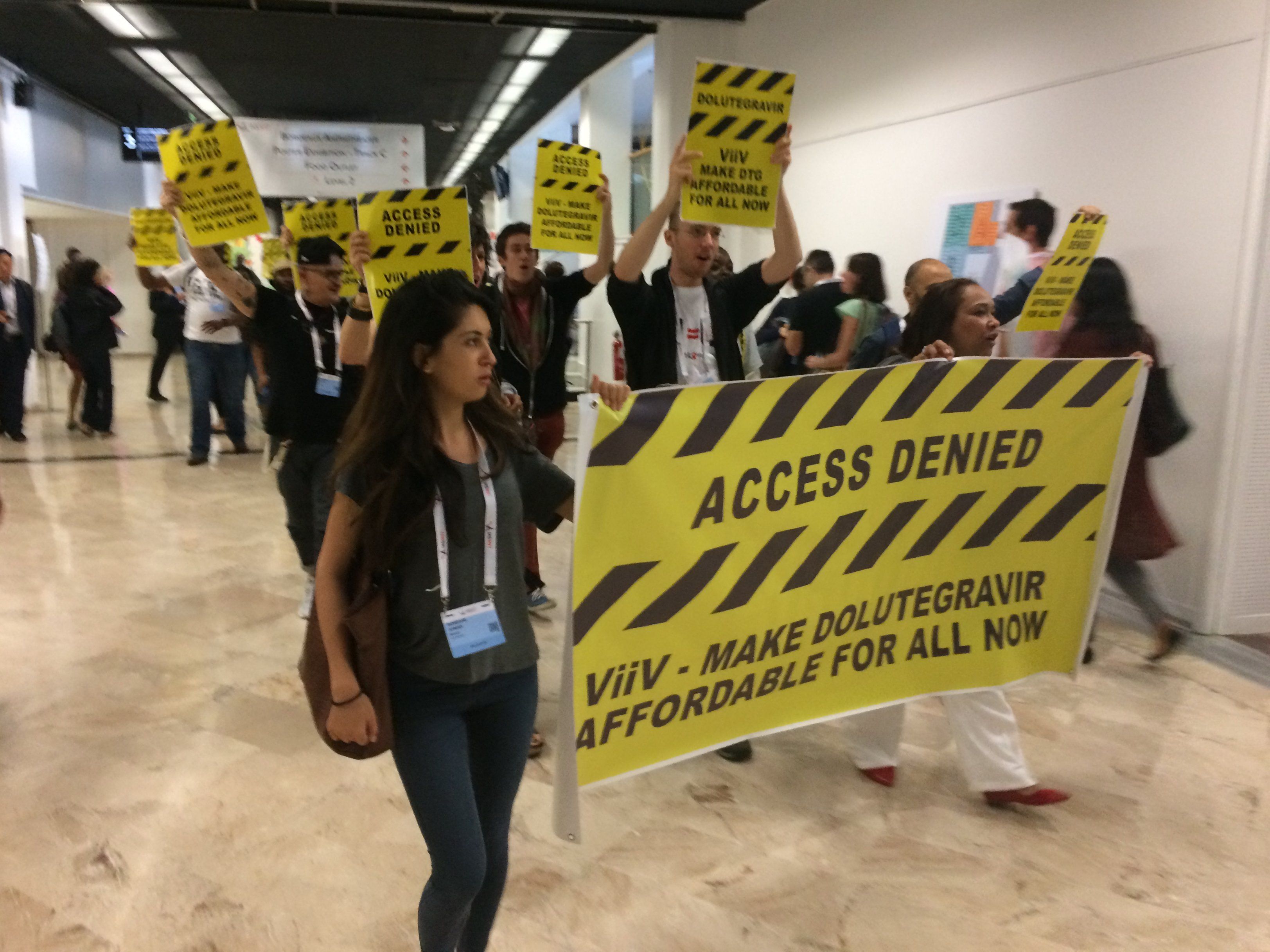LIVE FROM IAS: WEDNESDAY, JULY 26, 2017
Christina Psomas, MD, PhD is our « grand reporter »
Christina PSOMAS
Montpellier University Hospital
Montpellier – France
In today’s plenary session Tasuku Honjo from Kyoto University, Japan, covered the topic of PD-1 blockade immunotherapy against cancer and infectious diseases (WEPL0101). Blockade of the negative immunoregulator programmed death-1 (PD-1) surface singling molecule has been used as cancer immunotherapy by boosting timor-killing immune responses. To date more than 200 clinical trials have been conducted, demonstrating effective responses for a wide range of tumors with less adverse events and more long-term response than existing drugs. Combination of different anti PD-1 therapies are currently under investigation in order to increase efficacy, and combination of PD-1 blockade with mitochondrial activators may increase response rates in murine cancer models. Anti PD-1 antibodies have shown some efficacy in reducing HIV-RNA in animal models, but this effect is yet to be demonstrated in humans. Anti-PD-1 therapy may have potential to produce a functional cure for HIV by inducing sustained viral remission.
Alexandra Calmy from Geneva University Hospital, Switzerland, talked about Antiretroviral drugs and issues beyond them (WEPL0103). Great progress has been made in the last 3 decades with the development of more than 30 drugs, 53% ART coverage worldwide (19.5 million individuals in UNAIDS report, july 2017) and dramatic impact of HIV response on life expectancy. Major changes in drug prescription practices involve reach of UNAIDS 90-90-90 goals, universal access, and individualized patient-specific treatment (gender considerations, medical history). Beyond therapeutic trials new indicators of treatment success have to be considered such as cost-effectiveness, quality of life, and treatment convenience (drug reduction, age-appropriate formulations). There are still many challenges to cure HIV, to achieve an AIDS-free generation and to correct health inequalities.
Fabien Zoulim from Lyon I University, France, presented challenges and novel approaches to cure HBV infection (WEPL0104). Currently, treatment of HBV is mainly limited to viral suppression and sustained disease control. Challenges to achieve HBV functional cure include the identification of biomarkers predicting the cure of infection, improvement of in vitro and animal models for drug discovery, mechanisms to target covalently closed circular (ccc)DNA (template for viral RNA and new virions), and restoration of HBV specific immune responses.
The Symposia Session “Do We Need Triple Therapy for Everyone for Life?” filled in the Havana Amphitheater and 4 overflow rooms.
Christine Katlama from Hôpital Pitié Salpétière / Sorbonne Universités Paris, France, reviewed recent clinical trials of dual (GARDEL, NEAT 001/ANRS 143, PADDLE, ACTG 5353, GEMINI 1 and 2) or mono therapy (MONARK) during ART initiation (WESY0302). Dual ART with potent and robust drugs is a realistic ART option for treatment-naive patients with low to moderate viral load and good immune status, with no obvious incidence on reservoir and genital compartment and significant budget impact.
Anna Turkova from UCL, United Kingdom, presented the rationale for Short Cycle Therapy of 4 (US trial in youth, ICCARRE, ANRS 162-4D) or 5 days a week (FOTO, trial in Uganda, BREATHER) on virological suppressed patients (WESY0303). Even if they are relatively small trials (≤100 patients), they displayed improved life style, reduced toxicity and saved costs, an excellent virological efficacy and a high preference of patients for the strategy.
Kiat Ruxrungtham from the HIV Netherlands Australia Thailand Research Collaboration (HIV-NAT), Thailand, presented positive lessons learned from their studies with dose reduction of EFV and ATV/r (WESY0304)(DMP-006 trial, ENCORE1 and LASA studies). Improving tolerability by dose optimisation could improve long-term outcomes, the next step being guidelines implementation.
José Arribas from Hospital La Paz, Spain, demonstrated results from mono therapy or dual therapy in switch studies (WESY0305). These studies found that MVC or RAL cannot substitute 2 N(t)RTIs in suppressed patients treated with a boosted PI, but 3TC offers this possibility. Even if current evaluations of ART simplifications are all based on viral suppression, we should also evaluate residual viremia, persistent inflammation and immune activation, penetration in reservoirs, toxicity and cost.
The Oral Abstract Session Track B involved a potpourri of comorbidities. Jessica Castilho from Vanderbilt University Medical Center, United States discussed trends of non communicable disease (NCD) multi-morbidity among HIV-infected adults initiating ART in the Coorte Brasil, presenting 2 or more cumulative NCDs (WEAB0101). The incidence of NCDs is increasing in this population and female sex is independently associated with increased risk. Hyperlipidemia, diabetes and osteoporosis account for the majority of NCDs.
Matthew Freiberg from Vanderbilt University Medical Center, United States, discussed whether HIV-infected people have an increased risk of Peripheral Artery Disease (PAD) as compared to uninfected people (WEAB0102). Analyzing data on 92,287 VACS participants
without prevalent CardioVascular Disease (CVD) he concluded that HIV infection is associated with an increased risk of incident PAD even after adjustment for traditional CVD risk factors. Among HIV-infected veterans, those with higher HIV viral loads and lower CD4 cell counts have the highest risk of PAD. PAD had impact on mortality and was greatest among those with immunodeficiency or unsuppressed virus.
Dominique Costagliola from Sorbonne Universités, France, presented an analysis from FHDH ANRS CO4 regarding the risk of fracture in HIV-infected individuals and the impact of exposure to different ARVs (WEAB0103). They conducted a case-control study within individuals enrolled while naive of ARV and found no evidence of excess risk of fracture following exposure to tenofovir or PIs. Cumulative exposure to efavirenz was associated to lower risk of fractures, but this association is not necessarily causal, as for any observational studies.
Maartje Dijkstra from Public Health Service of Amsterdam, Netherlands, discussed about erectile dysfunction among older HIV-infected MSM (WEAB0104). HIV-1 status was independently associated with decreased erectile function MSM aged ≥ 45 years. This higher prevalence of decreased sexual satisfaction and desire may be explained by higher prevalence of depression, frailty, and age-related comorbidities. Current exposure to lopinavir/r also appeared to be an independent risk factor for decreased erectile function.
Nithya Srinivas from University of North Carolina at Chapel Hill, United States, studied the concentration of ARV in the brain tissue and CSF of uninfected and SHIV-infected rhesus macaques, in relation with the concentration of drug transporters on brain tissue (WEAB0105). Even if there was no difference in ARV concentrations between different parts of the brain, brain tissue concentrations were shown to be significantly higher than CSF for efavirenz, emtricitabine and tenofovir. CSF concentrations were predictive of brain tissue concentrations only for efavirenz. Brain tissue concentrations of efavirenz were 4-fold higher in uninfected animals compared to infected animals. BCRP protein (drug transporter) concentrations were 2 fold lower in uninfected animals than in infected and there was a trend noted between increasing concentrations of BCRP protein and lower efavirenz concentration in brain tissue.
See you next year on a bicycle in the beautiful Amsterdam.








